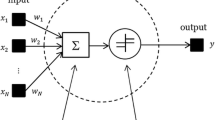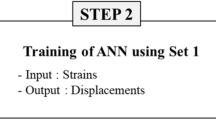Abstract
Bridges are critical to the functioning of any transport network and the failure of a bridge can have devastating effects, not only in relation to fatalities or damage associated directly with the collapse, but also to the functioning of the transport network in the aftermath. Traditional methods for inspection and monitoring of bridges are labor-intensive and time consuming and cannot feasibly be applied to monitor all of the bridges on a large transport network. This paper proposes an approach which utilizes vibration measurements from a vehicle driving across a bridge, to monitor changes in its condition over time. In-vehicle vibrations have successfully been used in the past to identify the dynamic properties of the bridge; however, the vehicle speed and the pavement conditions have a big influence on the measured response and can often mask any changes which might occur due to damage in the bridge. This paper demonstrates an approach which combines these in-vehicle vibration measurements with an Artificial Neural Network to identify bridge damage for varying vehicle speeds. The algorithm is shown to be successful in identifying cracking in the deck and changes in the boundary conditions due to seized bearings. The impact of pre-existing damage on the ability of the algorithm to detect further deterioration in bridge condition is also examined. The results show that the sensitivity to further increases in the existing damage is slightly reduced, however the detection of other types of damage is not negatively impacted. The results of the simulations performed in this paper provide a good indication that the application of machine learning to drive-by bridge monitoring represents a promising step towards making large-scale monitoring of bridges feasible.
Access this chapter
Tax calculation will be finalised at checkout
Purchases are for personal use only
Similar content being viewed by others
References
Favai P et al (2014) Bridgemon: Improved monitoring techniques for bridges. In: Nanukuttan S, Goggins J (eds) Civil engineering research in Ireland, Civil Enginerring Research Association of Ireland: Belfast, UK, pp 179–184
Malekjafarian A, McGetrick PJ, Obrien EJ (2015) A review of indirect bridge monitoring using passing vehicles. Shock Vib 2015:1–16
Yang YB, Yang JP (2018) State-of-the-art review on modal identification and damage detection of bridges by moving test vehicles. Int J Struct Stab Dyn 18(02)
Yang YB, Lin CW, Yau JD (2004) Extracting bridge frequencies from the dynamic response of a passing vehicle. J Sound Vib 272(3–5):471–493
Kariyawasam KD et al (2020) Assessment of bridge natural frequency as an indicator of scour using centrifuge modelling. J Civ Struct Health Monit
Malekjafarian A, Prendergast L, OBrien EJ (2019) Use of mode shape ratios for pier scour monitoring in two-span integral bridges under changing environmental conditions. Can J Civ Eng
ElHattab A, Uddin N, Obrien E (2017) Drive-by bridge damage detection using non-specialized instrumented vehicle. Bridg Struct 12(3–4):73–84
Gillich G-R et al (2019) A robust damage detection method based on multi-modal analysis in variable temperature conditions. Mech Syst Signal Process 115:361–379
Jin C et al (2016) Damage detection of a highway bridge under severe temperature changes using extended Kalman filter trained neural network. J Civ Struct Heal Monit 6(3):545–560
Sitton JD et al (2020) Frequency estimation on two-span continuous bridges using dynamic responses of passing vehicles. J Eng Mech 146(1)
Hester D, González A (2017) A discussion on the merits and limitations of using drive-by monitoring to detect localised damage in a bridge. Mech Syst Signal Process 90:234–253
Yang YB et al (2018) Contact-point response for modal identification of bridges by a moving test vehicle. Int J Struct Stab Dyn 18(05)
Nayek R, Narasimhan S (2020) Extraction of contact-point response in indirect bridge health monitoring using an input estimation approach. J Civ Struct Heal Monit 10(5):815–831
Corbally R, Malekjafarian A (2021) Examining changes in bridge frequency due to damage using the contact-point response of a passing vehicle. J Struct Integr Maint 6(3):148–158
Li J et al (2020) Time-varying characteristics of bridges under the passage of vehicles using synchroextracting transform. Mech Syst Signal Process 140
Cantero D et al (2019) Experimental monitoring of bridge frequency evolution during the passage of vehicles with different suspension properties. Eng Struct 187:209–219
Avci O et al (2021) A review of vibration-based damage detection in civil structures: from traditional methods to Machine Learning and Deep Learning applications. Mech Syst Signal Process 147
Cerda F, Chen S, Bielak J, Garrett JH, Rizzo P, Kovacevic J (2014) Indirect structural health monitoring of a simplified laboratory-scale bridge model. Smart Struct Syst 13(5):849–868
Malekjafarian A et al (2019) A machine learning approach to bridge-damage detection using responses measured on a passing vehicle. Sensors 19(18)
Locke W et al (2020) Using drive-by health monitoring to detect bridge damage considering environmental and operational effects. J Sound Vib 468
Corbally R, Malekjafarian A (2022) A data-driven approach for drive-by damage detection in bridges considering the influence of temperature change. Eng Struct 253, 113783
Jazar NR (2008) Vehicle dynamics, theory and application. Springer
Cebon D (1999) Handbook of vehicle-road interaction. Taylor & Francis
Sinha JK, Friswell MI, Edwards S (2002) Simplified models for the location of cracks in beam structures using measured vibration data. J Sound Vib 251(1):13–38
ISO, I. (2016) ISO 8608 Mechanical vibration-road surface profiles-reporting of measured data. BSI Standards Publication, London, UK
Author information
Authors and Affiliations
Corresponding author
Editor information
Editors and Affiliations
Rights and permissions
Copyright information
© 2023 The Author(s), under exclusive license to Springer Nature Switzerland AG
About this paper
Cite this paper
Corbally, R., Malekjafarian, A. (2023). Drive-By Detection of Midspan Cracking and Changing Boundary Conditions in Bridges. In: Wu, Z., Nagayama, T., Dang, J., Astroza, R. (eds) Experimental Vibration Analysis for Civil Engineering Structures. Lecture Notes in Civil Engineering, vol 224. Springer, Cham. https://doi.org/10.1007/978-3-030-93236-7_50
Download citation
DOI: https://doi.org/10.1007/978-3-030-93236-7_50
Published:
Publisher Name: Springer, Cham
Print ISBN: 978-3-030-93235-0
Online ISBN: 978-3-030-93236-7
eBook Packages: EngineeringEngineering (R0)




